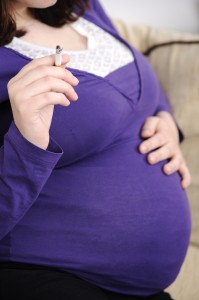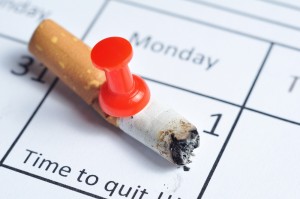We recently
attended the North West Alcohol Conference in Liverpool.
PhD students Natasha Clarke, Inge Kersbergen and Jay Duckworth summarise the
highlights.
Natasha Clarke
Professor David Walker, Deputy Chief Medical Officer of the NHS, gave
the first talk. This focussed on The National Alcohol Strategy; the proposal
put forward by the government to tackle our society’s harmful use of alcohol. The
key issue raised was the disappointment of Public Health England with the government’s reluctance to introduce minimum unit pricing
(MUP), despite initial plans to implement it. Evidence from Canada and the Sheffield
Alcohol Policy Model indicate the implementation of a
45p MUP may decrease alcohol consumption and reduce hospital admissions, yet
the strategy states that more evidence is needed. The sudden backtrack is suggested
to be due to intense lobbying from the alcohol industry; for example, the Wine
and Spirit Trade Association (WTSA) launched a campaign against the proposal and claim that MUP would
unfairly penalise the majority of responsible consumers. Previous research has shown that the industry
will selectively use evidence in order to support policies that are in line
with their commercial interests, and WHO stress that industry should have no role in
forming alcohol policy.
So what is being done? The government has committed to a ban of “below
cost sales”, with cost being duty + VAT. This is equal to roughly 21p per unit
for beer and 28p per unit for spirits, prices significantly lower than the
original proposed MUP. It is estimated that only 1.3% of all units
of alcohol sold will be affected by this and that a threshold of 45p would have
a considerably larger impact. The government also mentions a pledge through the
responsibility deal to take 1 billion units out
of the market by 2015; the Health Committee doesn’t think this will have any significant impact. A further emphasis was
placed on education campaigns, despite evidence showing their ineffectiveness in
reducing alcohol-related harm.
What was clear is that the government are not doing enough. Words and promises
(especially ones that are broken) will not produce changes in the nations’
health. An audience member asked David Walker… “Can you change culture?” The
answer was “Yes, we can”. Using smoking and driving behaviours as previous
examples he explained that these are health aspects to which our outlook as a
nation has changed. Smoking attitudes took decades to alter and faced similar
pressure from the industry. The verdict was that we must continue to fight for
better policy, but an equal match of input from public health and industry is
continuing to prove difficult.
Inge Kersbergen
Discussions then continued in different breakout sessions. Colin
Shevills and Ali Wheeler made a compelling case for changing licensing
regulations. Licensed premises are popping up everywhere in the country. You
can now buy alcohol in a large variety of places: in cinemas, indoor
playgrounds, and even hairdressers. And the more traditional licensed premises
keep growing in number as well. All whilst we know from research that the
density of licensed premises is related to more alcohol-related harm and crime.
The licensing act is still operating under the premise that licenses are
granted where possible, even if licensing committees and communities want to
limit the amount of licensed premises in an area. Licensing committees have very limited power when it comes
to restricting licenses in high density areas or taking licenses away. However,
they do possess two powerful tools to limit alcohol availability: Early Morning
Alcohol Restriction Orders (EMROs) and Late Night Levys (LNLs).
An EMRO restricts sales of alcohol in a specific area at a set time
between midnight and 6am. Premises that are in violation of this order will
receive a fine. The LNL is an additional fee for licensed premises if they want
to sell alcohol between midnight and 6am. At first glance these policies seem
very similar. The difference lies in how voluntarily businesses restrict their
selling times. At the start of November 2013 a LNL has been introduced in the
city of Newcastle. So far, it
seems like this levy has the effect of an EMRO, as many businesses voluntarily
decided not to pay the additional fee, but to stop selling alcohol at midnight
instead. The proposed EMRO in Blackpool, on the other hand, was met with a lot
of resistance from the business owners. The speakers argue that it is therefore
important that businesses do not feel forced into restricting their selling
hours to get their full cooperation. Local licensing committees should make
more use of the tools they have, get more freedom to limit licensed premises in
their area and be able to involve the local community in their decision making.
Jay Duckworth
Further suggestions for policy change came from Mark Gilman, Strategic
Recovery Lead at Public Health England and the National Treatment Agency for
Substance Misuse. Gilman, a passionate speaker, offered
advice which he concedes many see as “unscientific, folky [and] quirky”. His
idea is that we need to place more emphasis on twelve-step programs in which
addicts are forced to confront matters of “spirituality”. Initiatives such as Alcoholics Anonymous (AA) are of this breed,
asking addicts to admit they are “powerless
over alcohol” and to recognise that a “Power
greater than they can restore their sanity”. As Gilman admits, this may be
a difficult pill to swallow for many. First, non-spiritual individuals will
find it problematic to attain the “spiritual awakening” necessary for
success in many 12-step approaches. Additionally, though AA is effective at reducing
rates of drinking there are many equally
effective treatments available which come without the
mystical baggage. That being said, there is an essential feature of 12-step
programs which should be acknowledged as an important part of recovery: social
support from people who are abstinent from alcohol. Social networks of
abstainers appear to be one of the primary reasons why involvement in 12 step
programs helps people to abstain from alcohol.
The next speaker was Wim van den Brink, Professor
of Psychiatry and Addiction at the Academic Medical Centre of the University of
Amsterdam. Following
directly from the previous speaker, van den Brink started by saying that, “I agreed with almost everything you said,
but I’m going to disagree on some points just to make it interesting…” And
so he did. He focused on his own recently published research which tested the efficacy of the drug Nalmefene on an
alcohol-dependent population. Two clinical trials had shown that Nalmefene
reduced drinking significantly in patients relative to placebo. In his talk,
van den Brink focussed on additional analyses that compared the effects of the
drug on those who reduced their drinking between screening (when their drinking
was assessed by a doctor) and randomization (to receive either Nalmefene or
placebo), and those who did not. These analyses showed that many of the
patients reduced their drinking after screening and for this group, Nalmefene
had no effect. On the other hand, Nalmefene led to large reductions in drinking
among patients who did not reduce
their drinking after the initial clinical assessment.
These two talks complemented each other nicely
because they suggest that broad social factors play an important role in
recovery from alcohol problems. For some problem drinkers, simple assessment of
drinking by a doctor (which can be considered a ‘minimal’ psychological
intervention) is enough to help them to reduce their drinking. Whereas others
may need medication, such as Nalmefene, in order to cut down.



